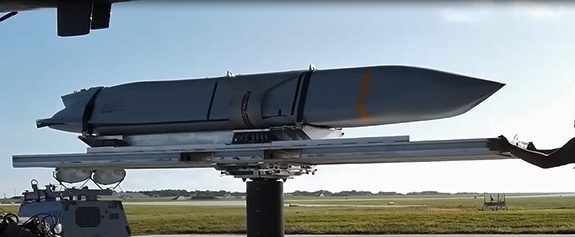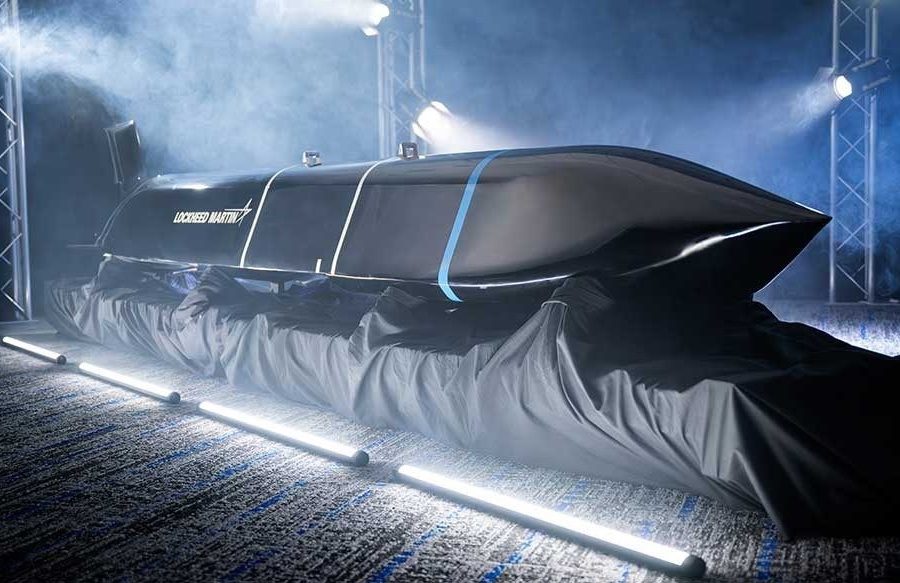Lockheed Martin received two Air Force contracts on Sept. 27, together worth $3.56 billion, for production of the AGM-58B Joint Air-to-Surface Standoff Missile and the AGM-158C Long-Range Anti-Ship Missile, the Pentagon announced. The contracts include missiles for the Air Force, Navy, and partner nations under the Foreign Military Sales program.
The company also recently unveiled plans for a larger variant of the missile with even longer range, called the JASSM-XR.
An Air Force spokesperson could not immediately say how many missiles are included under the contracts nor how many are for USAF and how many are for the Navy and FMS customers, but the larger contract, for $3.23 billion, covers JASSM Lot 22 and is to be completed by the end of July 2032. The Air Force said the quantities are “estimates only” as the contract is undefinitized.
The Air Force procurement portion of the larger contract was worth $1.5 billion, along with $2.1 million of operations and maintenance funding, while the Navy’s portion was $176 million and FMS was $752 million. The FMS portion includes missiles for Japan, the Netherlands, Finland, and Poland.
The smaller contract, worth $358.4 million, is a modification of Lot 8b of LRASM only. The Air Force portion was $145.5 million, while the Navy’s was $123.3 million, and the contract is to be completed by July 31, 2028.
The stealthy JASSM and LRASM are externally almost identical and have a 1,000-pound warhead.
The work for both contracts is to be performed at Lockheed’s Orlando, Fla., facilities. The Air Force’s Life Cycle Management Center awarded the contracts.
Lockheed officials said they are producing about 720 JASSMs per year, en route to about 1,100. The JASSM is one of several munitions for which the Air Force accelerated funding and production in its fiscal 2025 budget request.

At AFA’s Air, Space & Cyber Conference on Sept. 16, Lockheed announced it is working on the JASSM-XR, for “Extreme Range.”
The new missile is being developed by Lockheed with its own funds and features a missile body extended by several feet, the additional volume of which would be used for fuel. The company declined to state the exact dimensions of the missile or its expected range.
Michael Rothstein, vice president for strategy and requirements for air weapons and sensors at Lockheed Martin Missiles and Fire Control, said in a press conference at AFA that the range would be expanded “significantly” beyond that of the JASSM-ER, the Air Force’s current standard, adding the increase “is not minor.” The JASSM-ER reportedly has a range of about 500 miles, and industry sources speculated that the XR’s additional fuel capacity could double that to about 1,000 miles.
Lockheed officials at the conference said they are trying to anticipate what the Air Force will need relative to JASSM and LRASM and be ready when the service asks for it. Longer range “is an obvious ask,” one said, and the service is not interested in incremental improvements, but “step changes,” he said.
Rothstein said the missile could be test-flown in 2026 but is still “several years out” from being ready for production. Lockheed is “positioning” itself for a longer-range requirement, he said.
The additional range of the weapon would allow the U.S. to not just strike targets deeper within contested airspace, Rothstein said, but accelerate battle tempo, by allowing launch aircraft to fire sooner and return to a tanker or base right more quickly to reload and mount another sortie.
A Lockheed spokesperson said the XR “lays the groundwork for a more modular design, driving continuous improvements to capacity, capability, and commonality across missile variants, and providing low-risk, low-cost solutions to the government.” The spokesperson noted that the XR is not yet government-funded “or approved.”
The XR would have significant commonality with the JASSM-ER and LRASM, the spokesperson said, and could be carried by bombers, the F-35, F-15, and the F/A-18, but not the F-16. Because of its increased weight versus the standard JASSM or LRASM, If carried by a fighter, the aircraft’s range would be decreased, Rothstein said, but that would be offset by the missile’s longer range.
Modular, “smart” design can accelerate the overall JASSM/LRASM family production rate, Rothstein said, adding that the company has so far received positive feedback from the Air Force that a much longer-ranged weapon that takes advantage of a hot production line and gets to the field relatively quickly would be welcome.
The JASSM and LRASM are being built on “a mature” production line, Rothstein said, with qualified vendors and components, which means “you can markedly decrease your developments costs” and “development timelines” on a variant.
To take the JASSM/LRASM “to the next stage,” Rothstein said the company is looking for ways to increase modularity and digital design of the missile.
